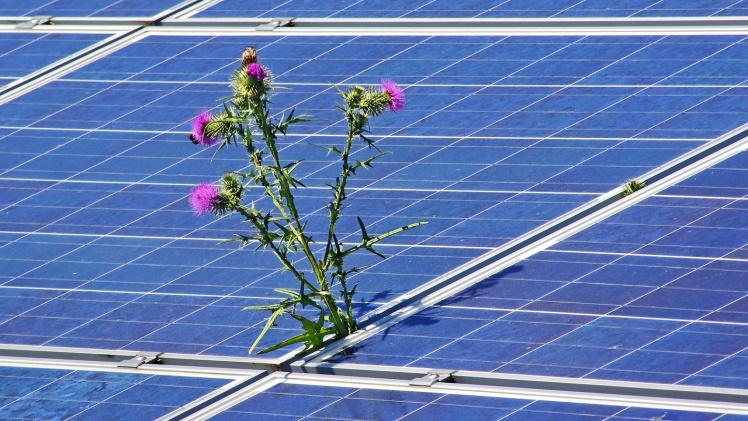Integrating solar energy into art and architecture is a harmonious fusion of aesthetics and sustainability. As the world grapples with the urgent need to combat climate change and reduce our carbon footprint, architects and artists increasingly turn to solar technology to assemble visually stunning, energy-efficient structures and installations. We will explore the exciting realm where solar energy meets art and architecture, exploring how this synergy can reshape our built environment while advancing sustainability.
Solar Energy as an Artistic Medium
Solar panels, with their sleek and modular designs, have evolved beyond mere functional installations. They have become artistic mediums in their own right, inspiring artists to incorporate them into their works. These solar-powered artworks serve as compelling symbols of the fusion between art and renewable energy. Sculptures adorned with solar panels, for instance, not only generate clean electricity but also captivate viewers with their innovative and eco-conscious designs. Artists are harnessing the potential of solar energy not only as a means to power their creations but also as a source of creative inspiration.
1. Solar-Powered Public Art
Solar-powered public art installations are transforming urban landscapes into dynamic and sustainable spaces. These installations combine form and function, functioning as landmarks that engage the public while generating clean energy. One notable instance is the “Solar Sunflowers” in Austin, Texas, where massive flower-shaped solar panels capture sunlight and generate power while beautifying the city’s skyline. Such installations indicate how solar energy can seamlessly integrate into public spaces, enhancing aesthetics and sustainability.
2. Solar-Powered Light Art
Solar-powered light art installations leverage the sun’s energy to create breathtaking visual experiences. These artworks come alive after dark, utilizing stored solar energy to illuminate city streets, parks, and public squares. For instance, “Solar Tree” sculptures combine artistic form with practical function, furnishing ambient lighting in outdoor areas while showcasing the potential of renewable energy. These solar-powered light installations not only reduce energy consumption but also infuse urban environments with a sense of wonder and enchantment.
Solar Energy in Architectural Design
Architects are increasingly recognizing the importance of solar energy integration in their designs. Solar panels and building-integrated photovoltaics (BIPV) have become integral elements of sustainable architecture, offering not only energy efficiency but also aesthetic possibilities. The following sections delve into how solar energy is revolutionizing architectural design and reshaping our built environment.
1. Building-Integrated Photovoltaics (BIPV)
Building-integrated photovoltaics (BIPV) has revolutionized the way architects approach sustainable design. BIPV seamlessly incorporates solar panels into building materials such as facades, roofs, and windows, transforming them into energy-producing surfaces. This innovative approach not only generates clean energy but also enhances the aesthetic appeal of buildings. The solar panels blend harmoniously with the overall design, creating a seamless and visually appealing integration of technology and architecture.
2. Sustainable Iconic Landmarks
Solar energy is increasingly becoming a defining feature of iconic architectural landmarks. Buildings like the One World Trade Center in New York City and the Sydney Opera House in Australia incorporate solar panels into their designs, symbolizing a commitment to sustainability. These structures serve as global symbols of progress and innovation, inspiring others to adopt renewable energy solutions and demonstrating that sustainability can coexist with architectural grandeur.
3. Net-Zero Energy Buildings
The concept of net-zero energy buildings is gaining traction in architectural circles. These buildings assemble as much energy as they consume, relying on solar panels to achieve this balance. Architects are designing homes, offices, and institutions that not only prioritize energy efficiency but also utilize solar energy as a primary source of power. In doing so, they are redefining the relationship between buildings and the environment, making sustainability a paramount part of architectural philosophy.
The marriage of solar energy with art and architecture represents a compelling shift towards a more sustainable and aesthetically pleasing built environment. Solar-powered artworks and innovative architectural designs are not only functional but also inspire a profound sense of wonder and appreciation for the beauty of renewable energy. As the world continues to grapple with climate change and environmental challenges, the integration of solar energy into art and architecture stands as a beacon of hope, showcasing the transformative power of human creativity and innovation in the pursuit of a more sustainable future.
Professionals in the solar energy industry play a pivotal role in driving innovation and sustainability. Engineers and technicians design and install solar systems, ensuring their efficiency and reliability. Solar sales and marketing experts promote renewable energy adoption, while policy analysts and lobbyists advocate for supportive regulations. Researchers constantly push the boundaries of solar technology while financial analysts assess the economic viability of solar projects. Together, these professionals contribute to the growth of the solar energy sector, creating job opportunities and fostering a cleaner, more sustainable future for our planet. If you are looking for such professionals, consider EcoGen America.

